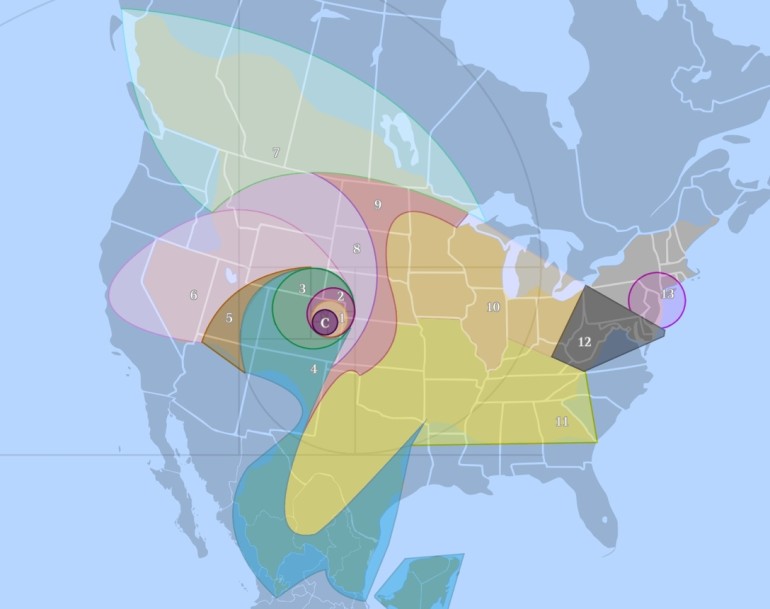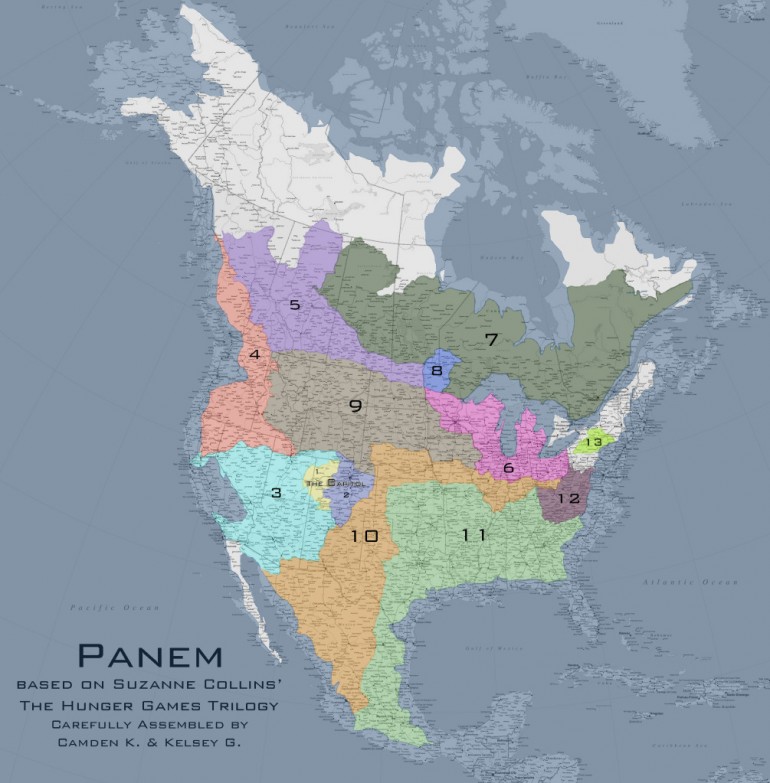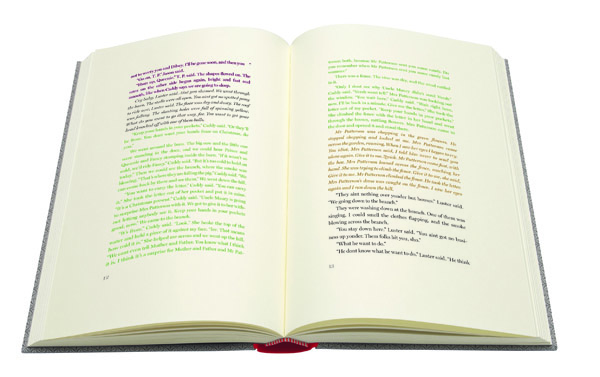Bloggers aimmyarrowshigh and badguys have created this exceptionally accurate map of Panem, the world created by Suzanne Collins in her series “The Hunger Games “. Panem is described being a North America that has been ravaged by war and geological catastrophes.
“. Panem is described being a North America that has been ravaged by war and geological catastrophes.
“The result was Panem, a shining capitol ringed by thirteen districts, which brought peace and prosperity to its citizens. Then came the Dark Days, the uprising of the districts against the Capitol. Twelve were defeated, the thirteenth obliterated.”
 image courtesy of badguys and aimmyarrowshigh
image courtesy of badguys and aimmyarrowshigh
Click the map. It’s massive. And well thought out. Its creators took into consideration all sorts of information from the books, including:
- The Capitol is in Denver.
- D12 is Appalachia.
- D11 shares a border with D12, is one of the largest districts, is South of D12, and is primarily used for growing grain and produce.
- D10 is primarily used for raising livestock. They do NOT process the livestock in D10. However, to feed an entire nation, D10 is likely another very large District.
- D9 processes food for the Capitol and the tesserae; therefore, it likely shares borders with the food production Districts (D4, D10, D11).
- D8 produces and treats textiles and is a factory District. It is POSSIBLE to reach D12 from D8 on foot over a course of weeks/months. Therefore, it does not cross a large body of water.
- D7 specializes in lumber. It’s probably large. It has no role in food processing or manufacture.
- D6 works closely with the Capitol in the research and manufacture of drugs (morphling, medicines). It likely has close ties to D5 in the production of mutts.
- D5 is entirely dependent on the Capitol, so it’s probably somewhat nearby, and specializes in genetic research and manipulation. Because of the necessity of creative thought and intellect, it’s most likely a smaller District so that it’s easier to monitor and control.
- D4 is the ocean. It does have a role in food production. It’s very large. It is a Career District, so it likely is near the Capitol and has some self-sufficiency, but not enough that it doesn’t engender loyalty. (Aside from that, D4 = perfect.)
- D3 has extremely close ties to the Capitol and works with electronics and technology. It is likely small, the Capitol can closely monitor its scientific minds. It has no role in food manufacture or processing.
- D2 specializes in weaponry, is the most loyal District (because the Capitol needs to keep its weapon specialists happy, non?), and has no role in food production. D2 also works in some minor Mining elements and trains Peacekeepers. The Panem railroad is easily accessible in D2.
- D1 produces luxury goods for the Capitol — INCLUDING having a diamond mine. Kelsey Lake Diamond Mine is a defunct diamond mine in Colorado, USA. It is located in the State Line Kimberlite District, near the Wyoming border.
- D13 specialized in nuclear power, shares a border with D12, is both visible and reachable from D12 by foot, and is North of West Virginia. Three Mile Island was in New York Pennsylvania, and probably remained a nuclear reactor or was co-opted again as a reactor. D13 is small but mighty and is surrounded by Wilderness. It is self-sufficient.
This information was combined with some speculation about the results of future cataclysmic natural disaster in order to reach the maps final result. Of course, to me, the most interesting aspect of the map is the Capitol is located in what is now Denver, Colorado. I like the idea of Denver being the future capital of the post-apocalyptic dystopia.
Additionally, I would be remiss to not include Nerd Friday’s version of the Panem map shown below. This arguably more accurate map places the Capitol near Grand Junction, Colorado. More information about Nerd Friday’s creation process can be found in the bibliography and referenced works as well as the frequently asked questions section.





